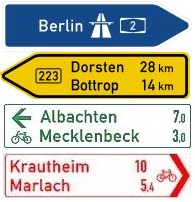There is a wide variety of landscapes and easy cycling terrain in Germany, from the Northern flat lands to the river valleys. The Rhine River basin dominates the central and western part of the country; other important rivers include the Neckar, Main, Danube, Weser and Elbe. Germany has vastly improved its cycle infrastructure over the last decade and now has a extensive network of well marked local and long distance cycle routes. About 80% of the population in Germany own bicycles which makes a total of around 73 million bikes being used more and more frequently. In 2016 around 6.9 million Germans went on a cycling holiday in their home country lasting several days and including overnight stays.
Doing a cycle tour with children along the rivers of Germany is surprisingly easy and enjoyable. It is safe (no speedy downhill parts), predictable and also matches their levels of stamina. In Germany many children cycle for an organised family day out or for a longer vacation. On their own bike or safe in a bike seat or bike trailer or on their tagalong.
Climate
Germany enjoys frequent weather changes although it tends to be most stable in the summer. Early spring till late autumn is the best season for a cycling tour. The country has four distinct seasons with rainfall in most months, especially in the autumn. Summers are rarely hot (usually about 25°C/77F). Humidity levels are usually quite high. An Indian summer might last till the end of October. In a harsh winter, temperatures can drop well below freezing point and remain there for several weeks.
Traffic rules for cyclists
According to the German traffic law, bicycles sometimes have their own special regulations. These may differ from those for motorized traffic.
-
A bicycle must have brakes fitted at the front and rear of the bicycle. The rear brake can be of a rim, drum or back pedal type.
-
Traffic turning off a main road must always give way to the traffic continuing along that road. This also means that cars turning right have to give priority to bikes (on their ‘inside’) going straight on.
-
Cyclists are not allowed on motorways.
-
Cycling against one-way traffic on the road is permitted if this is indicated by a secondary sign underneath.
-
Cycling side by side (max. 2 persons) is permitted provided that other road-going traffic is not inconvenienced.
-
Changing direction is indicated by putting your arm out in the desired direction.
-
On roundabouts marked with a roundabout sign you should yield on entry. Going around the motorists who want to leave the roundabout (or circle) should give way to cyclists who stay on the roundabout.
Traffic signs for cyclists

Bicycle path and end of bicycle path

Cyclists prohibited

Except for cyclists at head sign "one way street"

Designated bicycle route
Road signs
 Roads are systematically numbered which makes navigating in Germany very relaxing. Motorway signs are blue ans signs for local roads are yellow. Typical bicycle direction signs have a bike logo are colored white/red for through roads and white/green for touristic routes. Distances are in kilometres. A cycle computer/odometer, calibrated in kilometres, is also very useful for longer tours when you need to work out the distance travelled on maps and at road signs.
Roads are systematically numbered which makes navigating in Germany very relaxing. Motorway signs are blue ans signs for local roads are yellow. Typical bicycle direction signs have a bike logo are colored white/red for through roads and white/green for touristic routes. Distances are in kilometres. A cycle computer/odometer, calibrated in kilometres, is also very useful for longer tours when you need to work out the distance travelled on maps and at road signs.
Safety
Helmets
There is no legal obligation to wear a helmet for everyday cycling in Germany. However, some courts have decided cyclists are partly to blame when injured in street traffic while not wearing one, which can influence legal claims for compensation.
Lightning
A bicycle must have a white front reflector and a red rear reflector. These reflectors may be combined with the head- and taillight. Two spoke reflectors per wheel (or a reflective strip on the tyre-wall) are compulsory.
Bicycle theft
Like everywhere else in the world Germany also experiences bicycle theft. A good cable or chain lock is recommended which allows the bicycle to be secured to permanent object. As well as this, some towns (especially Berlin) have secure parking facilities for bicycles at railway stations and shopping centres.
